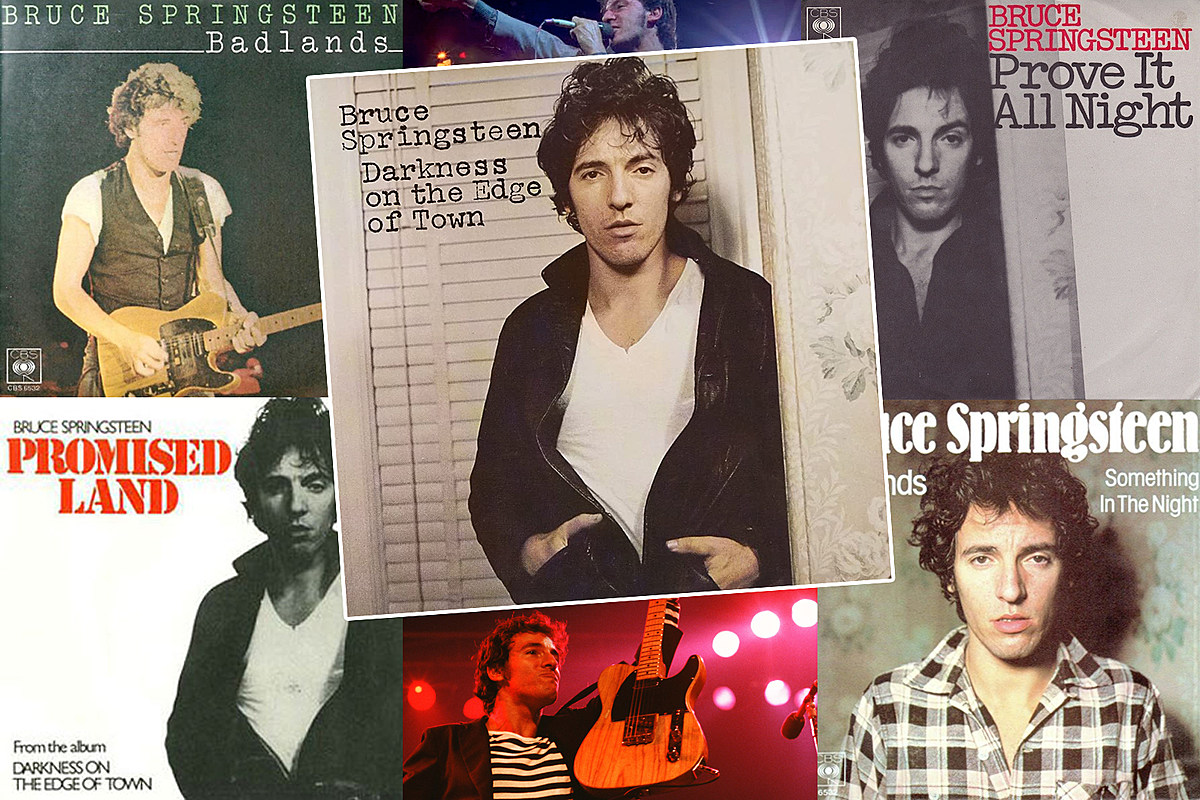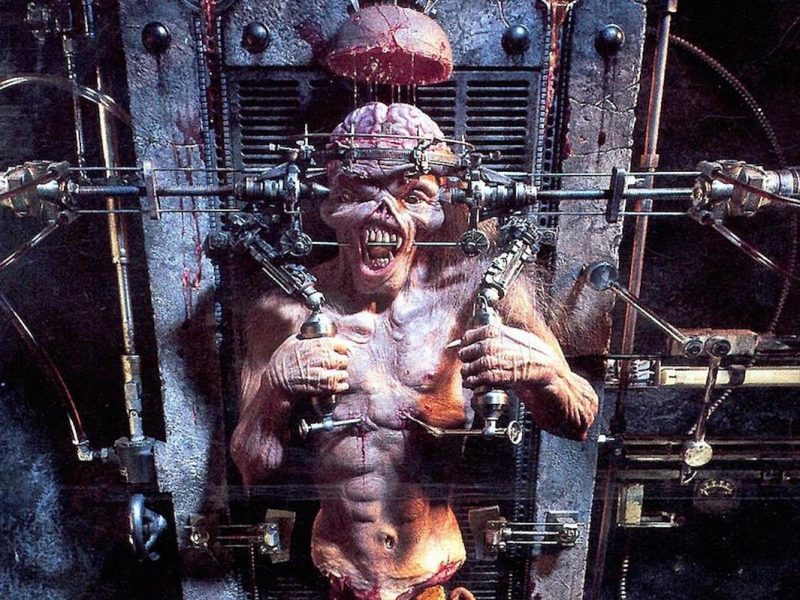Can it get more dramatic than having your face plastered on the front of Time and Newsweek during the same week? For Bruce Springsteen, the answer was yes.
He’d been a double cover boy as his breakthrough Born to Run came out in 1975. The next few years, however, brought Springsteen’s recording career to a standstill as he and manager/producer Mike Appel entered protracted litigation over control and song ownership that wouldn’t be settled until 1977.
Springsteen was kept out of the studio but definitely not off the road, and the situation hardly stalled his creativity as he came up with a wealth of material that would be considered for his fourth album, Darkness on the Edge of Town. Still, three long years passed before the LP arrived on June 2, 1978 – a potentially career-killing eternity back then.
Springsteen was assisted by new manager Jon Landau, who’d joined the production team on Born to Run, and old pal Steven Van Zandt, a newly minted member of the E Street Band. Darkness on the Edge of Town was recorded over 15 months in New York City, mostly at the Record Plant.
Despite the Top 5 success of Born to Run, Springsteen was after something new. “I had a reaction to my own good fortune,” he wrote in the 1997 lyric book Songs. “I wanted my new characters to feel weathered, older, but not beaten. … I intentionally steered away from any hint of escapism and set my characters down in the middle of a community under siege.”
Springsteen was also seriously listening to country music for the first time, and he took a shine to movies such as The Grapes of Wrath, East of Eden, and Thunder Road, as well as Westerns like The Searchers and Gun Crazy. He found an additional new source in the noir genre.
“Musically, I wanted the record to sound leaner and less grand than Born to Run,” Springsteen added. “That sound wouldn’t suit these songs or the people I was now writing about. … After Born to Run, I wanted to ensure that my music continued to have value and a sense of place.” He told Rolling Stone that “when I was making this particular album, I just had a specific thing in mind. And one of the important things was it had to be just a relentless – just a barrage of the particular thing.”
Engineers Jimmy Iovine, Thom Panunzio and Chuck Plotkin helped him achieve that, though Springsteen admitted it wasn’t easy. “Weeks, even months went by, before I had something that felt right,” he said.
Springsteen’s return was widely hailed when Darkness on the Edge of Town was released, some 10 days after his lead single “Prove It All Night.” The LP made its way to No. 5 on the Billboard 200 and is now certified triple-platinum. Still, sales didn’t match Born to Run. Fans may have been surprised by the album’s grit and overall demeanor after the cinematic, sentimental abandon of its predecessor.
Listen more closely, however, Springsteen can be heard fighting back against the darkness: “I put in the first few seconds of [the opening track] ‘Badlands,’ those lines about ‘I believe in the love and the hope and the faith,'” he told Rolling Stone. “It’s there on all four corners of the album.”
Here’s a track-by-track deep dive into this timeless, still sometimes misunderstood album:
“Badlands”
Darkness at the Edge of Town opens with a salutation from Max Weinberg’s drums and an explosion of guitars and keyboards as Springsteen warns that there’s “trouble in the heartland” and “a head-on collision smashin’ in my guts, man.” But “Badlands” also champions the belief in faith and love, declaring in the final verse that “it ain’t no sin to be glad you’re alive.” “Badlands” took its name from the 1973 Terence Malick film and was this LP’s second single, reaching No. 42 on the Billboard 100. The song also sources the Animals (“Don’t Let Me Be Misunderstood”) and Elvis Presley (“King of the Whole Wide World” from the film Kid Galahad) but is ultimately all Springsteen. “Badlands” opened concerts throughout the Darkness tour and has been a staple in his shows ever since. One particularly memorable performance, captured on Live 1975-85, took place in Arizona on the night after Ronald Reagan was elected to his first term as president and Springsteen confessed, “I think it’s pretty frightening.”
“Adam Raised a Cain”
Written as “Daddy Raised a Cain,” the heaviest rocker from Darkness on the Edge of Town starts with Springsteen wailing on guitar over a thunderous beat, before pulling back into a chorus that’s both mournful and menacing. The narrator’s attitude nods to James Dean’s Caleb Trask in East of Eden, while the biblical references come from Springsteen’s Catholic upbringing. It’s also, of course, drawn from his turbulent relationship with his father and its residual impact on Springsteen as a result: “You inherit the sins, you inherit the flames.” In addition to live performances, “Adam Raised a Cain” has lived on in the soundtracks to John Sayles’ Baby It’s You in 1983 and during the seventh season of Sons of Anarchy.
“Something in the Night”
Darkness slows the tempo for its third song, which was first performed live in August 1976 at Red Bank, N.J., and went through a series of dramatic lyrical changes over the years until it was finished for the album – including some lyrics Springsteen first tried out in “Prove It All Night.” There’s certainly darkness aplenty throughout these five minutes and 11 seconds. Still, “Something in the Night” is also one of Springsteen’s most inspired vocal performances, filled with angsty ache expressed both in lyrics and in the soulful, wordless emoting that recalls the last minute of “Jungleland” on Born to Run. After the full-throttle rockers that preceded it, “Something in the Night” reminded us that Springsteen and the E Street Band could be just as compelling, even spellbinding, when they downshift.
“Candy’s Room”
Springsteen joins the ranks of rockers singing about a special lady of the night on the album’s shortest track – though he’s always been a little cagey about confirming any details as fact. “Candy’s Room” has its roots in two earlier compositions, “Candy’s Boy” and “The Fast Song,” and in its dynamics with Weinberg’s high-hat tattoo into the murmured first verse and then an explosion into the full band 41 seconds in. Springsteen has never revealed the real identity of Candy, most likely a composite, though artist Karon Bihari told the National Enquirer in 2002 that it was about their relationship during the mid-’70s.
“Racing in the Street”
Sure, it’s about cars and references one of the most ebullient Motown songs of all time, but the first side’s closing track doesn’t quite put the top down and turn the radio up during its slow-burning seven minutes. This is a song for the long ride home after a lengthy evening of … whatever. “Racing in the Street” is reserved, contemplative and romantic in its noir outlook, taking us on a trip without trying to get anywhere fast. The journey is the destination, and any thunder on this road is in the distance. Several versions of “Racing in the Street” were recorded, including one with violin played by longtime Jackson Browne cohort David Lindley that was included in the 2010 box set.
“The Promised Land”
Speaking of thunder, the second side opens with “a dark cloud rising from the desert floor,” as our narrator drives along Utah’s I-80 in August 1977, right after Presley died. Springsteen, Van Zandt and photographer Eric Meola were in a rented 1965 Ford Galaxie 500XL, taking side-road detours and checking out sites such as the Valmy Auto Court, which would be used for a photo for the jacket of a vinyl single four years later. The howling dogs in the chorus from “The Promised Land” were heard on Main Street in the town of Elko, while the dark clouds were coming over the Humboldt Range while Meola was taking some photos. They eventually became the “twister to blow everything down” in the song’s final verse. Still, the song is no mere travel chronicle. For instance, there is no Waynesboro County in either Utah or Nevada. Ultimately, the tune asks: “How do we honor the community and the place we came from?” Springsteen said in the documentary The Promise: The Making of Darkness on the Edge of Town. “The Promised Land” was one of the last songs finished, as Springsteen and Landau remixed the song at the 11th hour and put the guitar solo back in after it had been removed. That delayed the album’s release by several weeks.
“Factory”
Douglas Springsteen’s impact on his son is felt again in this ode to the desperation of blue-collar labor and the workplaces occupied by men who “walk through these gates with death in their eyes.” The first version of the song, recreated for the 2010 box set, was titled “Come On (Let’s Go Out Tonight)” and had different lyrics about the death of Presley in August 1977, and more violin from Lindley. The song changed direction in September and was eventually finished in January 1978.
“Streets of Fire”
Springsteen told Rolling Stone this was a first-take song, though the sculpture from initial recording to the finished version wound up taking nearly 11 months to get right. Dynamically taut and pensive, it’s also as dark as Darkness on the Edge of Town gets, as the songs’ character is “a loser down the track” who’s “strung out on the wire” and walks “with angels that have no place.” Nevertheless, his fist is still punching the air as he bellows the choruses to the high heavens.
“Prove It All Night”
Dubbed “the lightest item” on the album by Rolling Stone, this advance single reached No. 33 on the Billboard Hot 100 but really came into its own in concert, as Springsteen and pianist Roy Bittan opened with a stretched-out instrumental improvisation that pushed the song from seven to 12 minutes, depending on the night. A concert version was earmarked to be released as a promotional single to radio in 1978, but Springsteen nixed the plan, along with his label’s request for a full-scale live album. Initial versions of “Prove It All Night” included lyrics that wound up in “Something in the Night,” while the recorded rendition was inspired by a New York City cab driver’s rant while he was transporting Springsteen.
“Darkness on the Edge of Town”
The light hasn’t surfaced as Darkness on the Edge of Town winds toward its album-ending title track, but there are signs it may be on the horizon. Springsteen promises that “I’ll be on that hill ’cause I can’t stop. I’ll be on that hill with everything I got,” looking for “things that can only be found in the darkness on the edge of town.” This was another of the album’s slow-gestating tracks. In fact, “Darkness on the Edge of Town” was the last to be recorded and mixed. It started life on the heels of the Born to Run tour in early 1976 and was sub-titled “The Racer,” and the album was already finished when Springsteen brought the band back into the studio in March 1978 to record an all-new version – less than three months before Darkness was released.
Albums That Saved a Band’s Career
Sometimes, the right record at just the right time can do wonders.
Why Bruce Springsteen Called Killers Collaboration ‘Cathartic’



